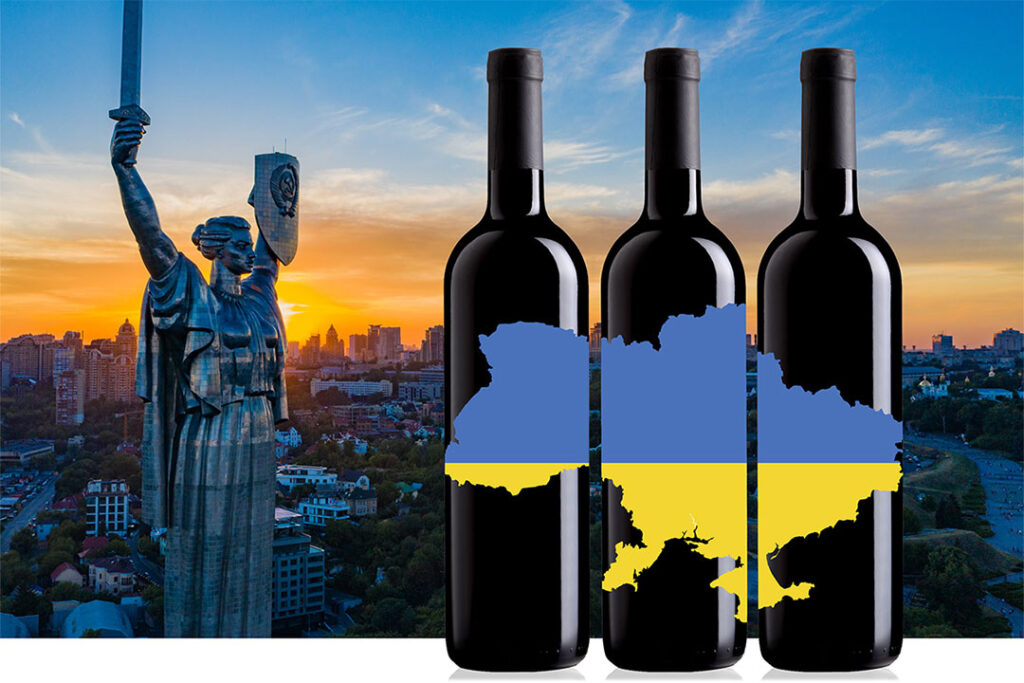War and Wine: Ukraine

What Putin’s War Means for Ukraine Wine
Our world is no stranger to war. In fact, some of the world’s best-known wine regions have been hotly contested and sometimes threatened during wartime, but most survived. Alsace, France, for example, has at times been in Germany—but that’s a story for another day.
Today, we will introduce you to a world wine region you might not know. Sadly, it is currently under threat, but history tells us that it may yet prevail. The terroir, climate, and people dedicated to growing and producing the wine will undoubtedly replant and pick up the pieces because they know how unique their properties are.
The Birthplace of Wine Itself
Ukraine’s winemaking history dates back to the 4th century BC. The quality of the wines produced in this region and neighboring Moldova, Georgia, and Hungary have been lauded by poets and monarchs for as long as wine has been spoken of.
Here, white wines are produced from aligoté, muscat, traminer, pinot gris, chardonnay, and Isabella, while red wines are made from pinot noir, and cabernet sauvignon. You’ll also find many indigenous varieties, including the highly aromatic Rkatsiteli, Telti Khuruk, and Sukholimanski Bely for whites and Odesa black for reds.
Some of the world’s top sommeliers recognize Ukrainian wine culture and quality, and the region’s best bottles are featured in Michelin-starred restaurants in London and France.
The Irrepressible Resilience of Ukraine
In 1986, Mikhail Gorbachev destroyed over 300 square miles of vineyards during a campaign to reduce Russian alcohol consumption. However, since the fall of the Soviet Union, production rebounded, and high-quality red, white, and sparkling wines once again graced tables at fine restaurants throughout Europe.
Unfortunately, the adversity continued. In 2014, Russia annexed Crimea, previously a Ukrainian territory. Ukraine lost more than half of its wine production as about 60% of its wineries were located on the Crimean peninsula.
The border between Crimea and the rest of Ukraine is currently the site of some of the heaviest fighting as Russia seeks control of the coastal city of Mariupol and eastward toward Odesa, one of the most significant areas for viticulture. Kherson, near Odesa in Eastern Ukraine, was recently taken by the Russian army. Reports show that many vineyards have been trampled or bombed, but winemakers are already planning their comeback.
In the meantime, many wineries in Ukraine, Moldova, Georgia, and Hungary have opened their doors to refugees, housing them in barrel rooms and cellars and focusing efforts on feeding and sustaining the influx of people.
To add to the problems, a wine bottle manufacturing facility near Kyiv was bombed early in the war, forcing workers to stop production and leaving most Eastern European wineries without bottles. Wine-producing countries surrounding Ukraine cannot obtain bottles or export wine as they usually would as Odesa is the main port. Wine-producing countries like Georgia and Moldova are cut off from their supply chains and most of their export revenue as Ukraine and Russia make up a significant portion.
How You Can Help
Though we can’t do much to change the course of Putin’s war, we can do a lot to support wine producers in the region. Seek out Georgian wine where you can, and keep the faith that Ukraine, its people, and its wine will rise again.
Source: CellarsWineClub.com


